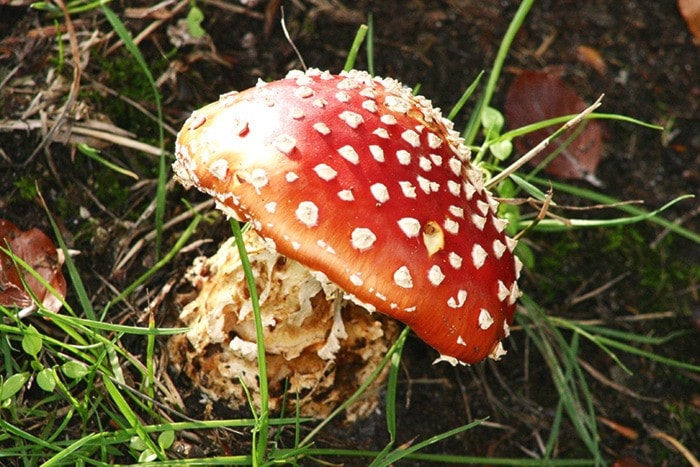Autumn has been called the ‘season of mellow fruitfulness” — and you can add mushrooms. When evenings begin to cool, trees change from green to gold and the morning dew sparkles on the lawns, mushrooms begin to pop up as if by magic. Wonderful mushrooms, with a palette of colours that includes whites, purples, oranges, yellows, and reds. And then, of course, there are the sometimes puzzling LBMS (‘little brown mushrooms”).
Fungi were once classified as plants but are now placed in their own ‘kingdom’.
They have no chlorophyll like green plants, and must live as parasites (on living things) or saprophytes (on dead organic matter).
Some fungi form ‘partnerships’ with algae called lichens.
The number of fungal species in the Fraser Valley is huge — in the thousands.
Not all are showy like the fly amanita (pictured), and many live underground.
Some fungi have evolved intimate relationships with plants, such as trees. It has been estimated that Douglas-fir has at least 100 of these mycorhizal partners.
The fungus aids the tree in mineral uptake from the soil, and the fungus obtains nutrients like sugars from the tree.
Identifying mushrooms (and other fungi) correctly is all about looking closely at details like — spore colour, gills, pores, colour, shape and what it’s growing on (substrate).
Fungi makes no seeds, instead, they produce microscopic “sparks of life” called spores.
When taking photos of mushrooms for identification keep the following in mind:
• Get close (macro) – very important
• Take several shots from different angles – top, side, habitat
• Gills or pores?
Never eat a mushroom unless you’re 100 per cent sure of its identification – and then be cautious.
There are some deadly species locally. Make sure a puffball really is one, and not the button stage of a poisonous species.
Do not pick mushrooms in parks and other protected areas – there are plenty of places outside of parks.
In your rambles watch for species like tiger’s eye, turkey tail, fly amanita, inky cap(s), shaggy mane and bleeding mycena.
Get a good field guide to local mushrooms, such as J. Duane Sept’s “Common Mushrooms of the Northwest” (Calypso Publishing).
If you are interested in joining the Langley Field Naturalists on one of their upcoming field trips or meetings, or have a nature question please go to their website at: http://www.langleyfieldnaturalists.org/
Langley Nature Notes
with Al Grass, Langley Field Naturalists
